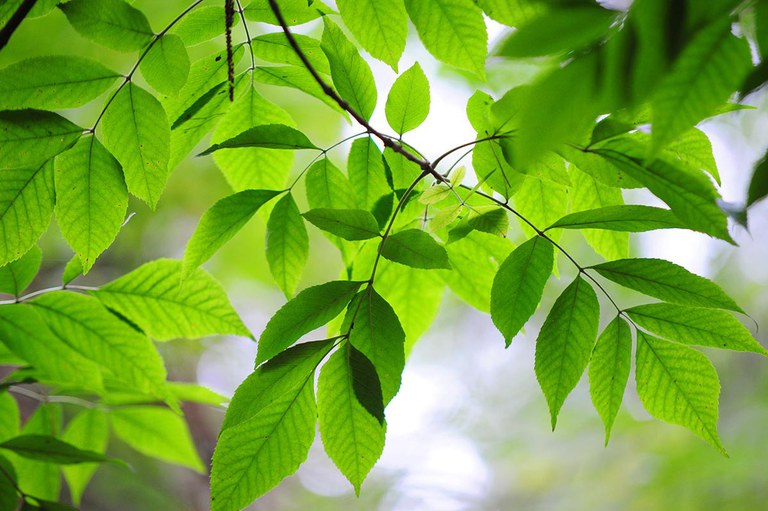Identifying defense-response genes in green ash trees to fight the invasive emerald ash borer
Problem
Can native ash tree species in the United States be saved from the emerald ash borer?
- The larvae of this invasive insect feed under the trees' bark, girdling and killing the trees within four years of infestation.
- Since first appearing in the United States in 2002, this destructive beetle has killed tens of millions of ash trees, but a small percentage of trees survive and may hold clues about how to rescue the species.
Findings
A team of plant geneticists compared gene expression data for resistant versus susceptible green ash genotypes exposed to attack by the beetles. They found that the gene expression response in the inner bark of resistant trees is induced when the emerald ash borer attacks rather than always being present.
- These findings contribute to longer-term research showing that the offspring of trees from certain wild populations, and to a lesser extent the offspring of certain seed parents within populations, exhibited superior resistance to attack by the insect.
Impact
This research will guide geneticists in the effort to selectively breed ash trees to strengthen their resistance, perhaps by quickening their resistance response to ward off the beetles' onslaught.
Related Research Area: Environmental Resilience
Research Credit
Team
- John Carlson, Kim Steiner, Di Wu, Jennifer Koch, Mark Coggeshall
Participating Departments
Partners
- The Arboretum at Penn State, Louis W. Schatz Center for Tree Molecular Genetics at Penn State, U.S. Forest Service, University of Missouri
Competitive Funding
- National Science Foundation (Plant Genome Research Program)
Other Supporting Sponsors
- Louis W. Schatz Center for Tree Molecular Genetics Endowment
Federal and State Appropriations
- USDA NIFA McIntire-Stennis Project PEN04717, Accession #1020603; USDA NIFA Hatch Multistate Projects PEN04532 and PEN04693, Accession #1000326 and #1018647
Emerging Discoveries
Ash tree species likely will survive emerald ash borer beetles, but just barely
Published Research
The first genetic linkage map for Fraxinus pennsylvanica and syntenic relationships with four related species
-
Wu, D., Koch, J., Coggeshall, M., & Carlson, J. (2019). The first genetic linkage map for Fraxinus pennsylvanica and syntenic relationships with four related species. Plant molecular biology, 99(3), 251-264. https://doi.org/10.1007/s11103-018-0815-9
Office for Research and Graduate Education
Address
217 Agricultural Administration BuildingUniversity Park, PA 16802-2600
- Email agresearch@psu.edu
- Office 814-865-3136
Office for Research and Graduate Education
Address
217 Agricultural Administration BuildingUniversity Park, PA 16802-2600
- Email agresearch@psu.edu
- Office 814-865-3136


